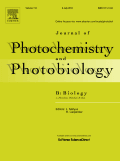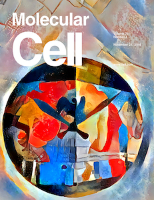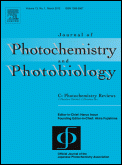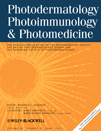
JOURNAL OF PHOTOCHEMISTRY AND PHOTOBIOLOGY B-BIOLOGY
metrics 2024
Bridging Disciplines Through Light-Driven Discoveries
Introduction
JOURNAL OF PHOTOCHEMISTRY AND PHOTOBIOLOGY B-BIOLOGY is a prestigious academic journal published by Elsevier Science SA in the Netherlands, focusing on the interdisciplinary domains of photochemistry and photobiology. With a notable impact factor and distinguished recognition across multiple disciplines, including Q1 rankings in Biophysics, Radiation, and Radiological and Ultrasound Technology, this journal is at the forefront of research dissemination in its field. The publication spans over three decades, from 1987 to 2024, reflecting its long-standing commitment to advancing knowledge in areas critical to both fundamental and applied science. Researchers and professionals are encouraged to submit original research articles, reviews, and short communications that explore the interactions between light and biological systems, with the aim of fostering innovative solutions impacting health and technology. Although it operates on a subscription model, this journal remains a vital resource for all those engaged in the scientific exploration of these dynamic fields.
Metrics 2024
 0.85
0.85 3.90
3.90 5.30
5.30 146
146Metrics History
Rank 2024
Scopus
IF (Web Of Science)
JCI (Web Of Science)
Quartile History
Similar Journals

IUBMB LIFE
Fostering Global Access to Cutting-Edge ResearchIUBMB LIFE is a prestigious, peer-reviewed journal published by WILEY, dedicated to advancing the fields of biochemistry, molecular biology, and cell biology. With an impressive impact factor and consistently ranked in the Q1 and Q2 categories across multiple relevant disciplines—including Biochemistry, Genetics, and Clinical Biochemistry—this journal has established itself as a leading platform for disseminating innovative research and critical reviews that propel scientific discovery. The journal spans a converged publication period from 1999 to 2024, providing comprehensive insights into the dynamic landscape of biochemical research. Researchers, professionals, and students alike are invited to explore its Open Access options, ensuring that groundbreaking studies are accessible to a global audience. As it continues to shape the future of life sciences, IUBMB LIFE remains a vital resource for those seeking to enrich their understanding and contribute to these rapidly evolving fields.

STRESS-THE INTERNATIONAL JOURNAL ON THE BIOLOGY OF STRESS
Bridging Disciplines in Stress ResearchSTRESS - THE INTERNATIONAL JOURNAL ON THE BIOLOGY OF STRESS, published by Taylor & Francis Ltd, is an esteemed open-access journal dedicated to advancing our understanding of stress and its biological underpinnings. Established in 1996 and continuing until 2024, this journal is pivotal in the exploration of stress across multiple dimensions, including its impact on mental health, neurobiology, and endocrine systems. With an impressive categorization in Q2 and Q3 quartiles across various fields such as Behavioral Neuroscience, Psychiatry, and Physiology, STRESS ranks commendably within its discipline, positioning itself as a vital resource for researchers and professionals alike. As of 2022, the journal's open access policy enhances visibility and accessibility, fostering a broader dissemination of knowledge. The journal invites submissions from a diverse range of disciplines, aiming to bridge gaps across fields and encourage interdisciplinary collaboration. By addressing the multifaceted nature of stress, STRESS remains essential for those eager to contribute to this dynamic and critical area of research.

Molecular Cell
Advancing the Frontiers of Cell and Molecular Science.Molecular Cell, published by Cell Press, is a leading journal in the fields of cell biology and molecular biology. Established in 1997, this prestigious journal boasts a significant impact within the scientific community, evidenced by its impressive 2023 Scopus rankings, placing it in the top 2% of its field (Rank #10/410 in Molecular Biology, Rank #12/285 in Cell Biology). With a focus on cutting-edge research that bridges the gap between molecular genetics and cellular function, Molecular Cell serves as an essential platform for the dissemination of vital findings and innovative methodologies. Although it follows a traditional publishing model without Open Access options, its rigorous peer-review process and high standards ensure that articles published within these pages are of the utmost quality, making it an invaluable resource for researchers, professionals, and students alike seeking to stay at the forefront of scientific discovery. The journal's address is 50 Hampshire St, Floor 5, Cambridge, MA 02139, United States, reinforcing its commitment to fostering scientific excellence and collaboration.

CELL BIOLOGY INTERNATIONAL
Illuminating Cellular Processes for a Healthier TomorrowCELL BIOLOGY INTERNATIONAL is a prestigious academic journal dedicated to the rapidly evolving field of cell biology, publishing high-quality research aimed at understanding cellular processes and their implications in various biological contexts. Published by Wiley, this journal has established its relevance with an H-Index that reflects its robust citation impact and a commendable Scopus Rank of #111 out of 285 in the field of Biochemistry, Genetics, and Molecular Biology, positioning it in the 61st percentile. Although it operates under a traditional subscription model, its influential insights are crucial for researchers, professionals, and students alike who are seeking cutting-edge developments in cellular mechanisms and their applications in medicine. The journal spans contributions dating back to 1993, providing a rich archive of knowledge that continues to shape the discourse within the scientific community. With a strong category ranking of Q3 in Cell Biology and Q2 in Medicine (miscellaneous) as of 2023, CELL BIOLOGY INTERNATIONAL stands as a reliable platform for disseminating transformative science in the cellular domain.

NATURE REVIEWS MOLECULAR CELL BIOLOGY
Advancing the frontiers of molecular and cell biology.NATURE REVIEWS MOLECULAR CELL BIOLOGY, published by NATURE PORTFOLIO, stands as a seminal journal in the fields of cell and molecular biology, with a significant impact factor that underscores its influence and reputation within the scientific community. Established in 2000 and continuing its legacy into 2024, this journal delivers comprehensive reviews that synthesize current knowledge and advancements in molecular and cellular processes. Respected for its high-quality articles, it has maintained a prestigious Q1 ranking in both Cell Biology and Molecular Biology categories as of 2023. With an exceptional Scopus ranking, taking the top position in its category, it attracts a readership of prominent researchers, professionals, and students eager to stay abreast of groundbreaking discoveries and methodologies. Although it does not offer Open Access, subscribers benefit from exclusive access to vital insights that foster innovative research approaches and advancements in the life sciences. The journal’s objective is to bridge the gap between research and application, providing indispensable resources to its audience while contributing to the global conversation on molecular and cellular biology.

Journal of Biophotonics
Unveiling the Potential of Biophotonics in Diverse FieldsJournal of Biophotonics is a prestigious academic journal published by WILEY-V C H VERLAG GMBH in Germany, dedicated to advancing the field of biophotonics through high-quality research. With an ISSN of 1864-063X and an E-ISSN of 1864-0648, this journal is recognized for its contributions within diverse categories, including biochemistry, genetics, molecular biology, chemistry, engineering, materials science, and physics, earning a commendable Q2 ranking in several of these fields as of 2023. The journal aims to bridge the gap between theoretical research and practical applications, fostering interdisciplinary collaboration that is critical for innovations in imaging, diagnostics, and therapeutics. Researchers, professionals, and students alike will find the Journal of Biophotonics invaluable for staying informed about the latest developments and breakthroughs in this dynamic field, making it a cornerstone for knowledge dissemination and scholarly discourse from its inception in 2008 and continuing through 2024.

JOURNAL OF PHOTOCHEMISTRY AND PHOTOBIOLOGY C-PHOTOCHEMISTRY REVIEWS
Catalyzing Knowledge in Photochemistry and BeyondThe JOURNAL OF PHOTOCHEMISTRY AND PHOTOBIOLOGY C-PHOTOCHEMISTRY REVIEWS, published by Elsevier, is a premier scholarly journal that serves as a critical resource for researchers and professionals in the field of photochemistry and photobiology. With a distinguished Q1 ranking in key categories such as Catalysis, Organic Chemistry, and Physical and Theoretical Chemistry, this journal consistently publishes high-impact articles that contribute significantly to the advancement of knowledge in these disciplines. The journal's rigorous peer-review process ensures the integrity and quality of the research it disseminates. Researchers benefit from its comprehensive review articles that discuss recent advancements, theoretical developments, and practical applications of photochemical processes, making it an essential read for anyone in the field. The journal's impact and relevance are evidenced by its impressive Scopus rankings, including a top percentile of 98th in Organic Chemistry. As the journal continues to explore innovative and interdisciplinary approaches, it stands out as a vital platform for sharing and discussing cutting-edge research findings within the community.

PHOTODERMATOLOGY PHOTOIMMUNOLOGY & PHOTOMEDICINE
Illuminating the Intersection of Skin Health and SciencePHOTODERMATOLOGY PHOTOIMMUNOLOGY & PHOTOMEDICINE, published by WILEY, is a leading academic journal dedicated to the interdisciplinary study of skin-related health issues, particularly focusing on the impacts of ultraviolet light as well as the immunological and therapeutic aspects of photomedicine. With a rich publication history dating back to 1990 and a commitment to advancing knowledge in its field, this journal serves as a vital resource for researchers and professionals working in dermatology, immunology, and related disciplines. Recognized for its high impact, it has achieved a Q1 classification in Dermatology and holds robust rankings in several other categories, reflecting its strong contribution to scholarly discourse. Although it does not currently operate as an Open Access publication, PHOTODERMATOLOGY PHOTOIMMUNOLOGY & PHOTOMEDICINE remains crucial for disseminating essential findings and innovations, particularly for those involved in studies exploring the intersections of skin health, immune response, and therapeutic technologies.

PHOTOCHEMICAL & PHOTOBIOLOGICAL SCIENCES
Advancing Knowledge in Photochemical and Photobiological ProcessesPHOTOCHEMICAL & PHOTOBIOLOGICAL SCIENCES is a distinguished peer-reviewed journal published by SpringerNature, focusing on the rigorous exploration of photochemical and photobiological processes that impact various scientific disciplines. Established in 2002, this journal serves as a vital resource for researchers and professionals in the fields of chemistry, biology, and environmental sciences, addressing fundamental questions as well as practical applications. With an impressive Scopus ranking of #67 out of 189 in the category of Physical and Theoretical Chemistry, it holds a significant position within the academic community, evidenced by its Q2 quartile ranking in 2023. Although it operates under a subscription model, the journal encourages broad engagement from scholars by hosting various articles that contribute to the understanding of light-mediated chemical processes and their relevance to ecological and biological phenomena. The journal’s objectives include fostering innovative research, supporting interdisciplinary collaboration, and disseminating knowledge that drives advancements in both academic and applied sciences. By bridging theoretical insights with practical applications, PHOTOCHEMICAL & PHOTOBIOLOGICAL SCIENCES continues to make substantial contributions to the scientific discourse surrounding photochemistry and photobiology.

EMBO REPORTS
Connecting Researchers with Groundbreaking DiscoveriesEMBO REPORTS, published by WILEY, is a premier journal in the fields of Biochemistry, Genetics, and Molecular Biology, recognized for its rigorous peer-review process and impactful scientific contributions. Established in the year 2000 in the United Kingdom, this journal has maintained a stellar reputation, reflected in its consistent positioning within the Q1 category across these disciplines as of 2023. EMBO REPORTS excels in disseminating high-quality and timely research that addresses fundamental questions and challenges in molecular biology and genetics, making it an invaluable resource for researchers, professionals, and students. With impressive Scopus rankings, including Genetics at the 32nd rank and a 90th percentile placement, it fosters an environment for scholarly exchange and advances in knowledge. While Open Access options are not available, the journal continues to enhance its impact through traditional subscription models, thereby maintaining wide visibility in the scientific community. Its ongoing evolution promises continued relevance and influence until at least 2024.